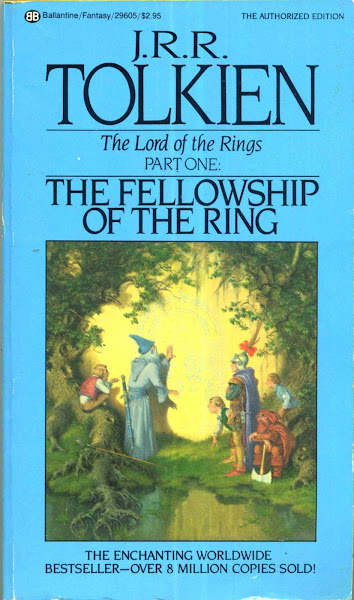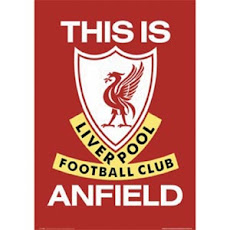That Locker Room Voice
by rick olivares
Someone asked me how is it that I am able to write about more than what goes on during a game. Well, I’m one of those who sit through a movie to read the credits. All the way to the soundtrack and location shootings. That says a lot of detail then. It helps because that’s how I got to know that Rage Against the Machine’s Tom Morello played one of the terrorists in Iron Man and that it was Compufonic’s “Welcome to Mindhead” which provided the great intro music to the abort sequence of Gene Hackman’s Behind Enemy Lines.
During games, I pay great attention to what goes on in front and around me: from defensive alignments to how many staggered screens are set to free up a shooter, who’s grabbing who, and when I can write fast enough, how many touches a player gets in one game. That’s how I was able to figure out how Benedict Fernandez is a key to Far Eastern University’s game. In almost every possession by the Tamaraws, the ball goes through the shooting guard who can light it up pretty quick.
As much as I love watching games live, there’s something about seeing the match on television where you get the benefit of instant replay, good angles, and the color commentary.
When I watched my first baseball game, I got a ticket high up in the upper tier. Not only was it cheaper but it also gave me a great view of the action. After a while, I noticed people beside me with earphones on listening to the radio broadcast. The analysts provided insights and anecdotes, more stats than the scoreboard could handle, and in-game interviews that made for a better game experience.
 It was the late ABC sportscaster Jim McKay who grabbed a hold of my attention with his now immortal, “Spanning the globe to bring you the constant variety of sports... the thrill of victory... and the agony of defeat... the human drama of athletic competition... this is "ABC's Wide World of Sports!" The shot of Yugoslav Vinko Bogataj flying out of control during the 1970 Ski-flying Championships in Obertsdorf, West Germany and crashing into the nearby barriers remains forever linked to McKay’s melodramatic intonation of “and the agony of defeat.”
It was the late ABC sportscaster Jim McKay who grabbed a hold of my attention with his now immortal, “Spanning the globe to bring you the constant variety of sports... the thrill of victory... and the agony of defeat... the human drama of athletic competition... this is "ABC's Wide World of Sports!" The shot of Yugoslav Vinko Bogataj flying out of control during the 1970 Ski-flying Championships in Obertsdorf, West Germany and crashing into the nearby barriers remains forever linked to McKay’s melodramatic intonation of “and the agony of defeat.” Since then, I paid equal attention to the sportscasters’ spiels and have seen how they affect the overall viewing experience. There are some sports such as basketball and soccer that can be viewed without the benefit of color commentary. On the other hand, stat-intensive and stop-start sports like baseball and American football are perfect for great television.
There is a reason why the National Football League (NFL) is the most watched domestic sports
 league with the highest revenue. In my opinion, they have the best coverage (most particularly NBC’s Sunday Night Football) in all of sports. NBC’s multi-awarded tandem of Al Michaels (the best play-by-play announcer) and John Madden (the most honored sports broadcaster of our times), studio host Bob Costas, and reporter Andrea Kremer, who asks the interesting and intelligent questions, make me come away thoroughly entertained and more knowledgeable.
league with the highest revenue. In my opinion, they have the best coverage (most particularly NBC’s Sunday Night Football) in all of sports. NBC’s multi-awarded tandem of Al Michaels (the best play-by-play announcer) and John Madden (the most honored sports broadcaster of our times), studio host Bob Costas, and reporter Andrea Kremer, who asks the interesting and intelligent questions, make me come away thoroughly entertained and more knowledgeable. My interest in the NFL was wholly a result of watching those documentaries done by NFL Films. The father and son tandem of Ed and Steve Sabol who first founded Blair Motion Pictures (that was eventually bought out and re-christened NFL Films) turned the game into an epic battle where every inch of turf was akin to a military operation and almost a literal life and death battle. The Sabols exclusively utilized film give their footage a wholly different texture from the traditional TV broadcast. Several cameras were employed that took a variety of angles of almost every play with one camera exclusively used in slow motion. Sound bytes from radio broadcasts were also used as well as close up shots of the expressions of players, the coaches, and crowd that ran the gamut of emotions. The game was then edited using the rich baritone of Philadelphia sportscaster John Facenda who was described as having “the voice of God.” When Facenda passed away, Philadelphia Phillies broadcaster Harry Kalas took over and is still a regular at Inside the NFL.
The footage, the rich voices, and the dramatic and superb orchestral scoring changed the way sports (and non-sports) documentaries were done. More so, it helped in the branding and selling of the game that has turned the NFL into a billion dollar a year industry and people like me a lifelong fan.
There’s something about those deep basso voices of narrators that make for great storytelling. Think of actor James Earl Jones who not only is the voice of Darth Vader but also did “This is CNN” for the worldwide news giant. Awesome ain’t it?
Following the formula of NFL Films is NBA Entertainment but with a somewhat different bent
 towards narration. Actor Laurence Fishburne provides a compelling yet soulful narration to Michael Jordan to the Max, an IMAX film about the 1998 Chicago Bulls’ Last Dance. It’s a superb film with great footage, soundtrack, and scoring. Another thespian, former James Bond Pierce Brosnan provided the voice over for The 2006 FIFA World Cup Film: The Grand Finale. It is particularly vexing when you think that Brosnan’s dry wit and delivery is a study in contrast with a highly-emotional sport set in its biggest stage.
towards narration. Actor Laurence Fishburne provides a compelling yet soulful narration to Michael Jordan to the Max, an IMAX film about the 1998 Chicago Bulls’ Last Dance. It’s a superb film with great footage, soundtrack, and scoring. Another thespian, former James Bond Pierce Brosnan provided the voice over for The 2006 FIFA World Cup Film: The Grand Finale. It is particularly vexing when you think that Brosnan’s dry wit and delivery is a study in contrast with a highly-emotional sport set in its biggest stage.  Regarding baseball, I confess to not watching too many outside New York Yankees games. But how many teams have gone beyond the sport into an international consciousness? As much as their onfield success, the Yankees owed their popularity to a trio of departed greats from Mel Allen, Phil Rizzuto, and Bobby Murcer who helped spread the popularity of pinstriped baseball. I loved the candor that Rizzuto brought to the broadcasts. If Allen popularized “how about that” and “going, going, gone,” it was the Scooter’s expressions (as Rizzuto was nicknamed) of “Holy cow” and “unbelievable” that brought fun into the game. There would be other sportscasters like Ken Singleton, Michael Kay, Paul O’Niell, and John Flaherty who have made Yankee broadcasts even more entertaining with their insider information and knowledge. Baseball, already a scientific game loaded with serious stats, was broken down by the Scooter.
Regarding baseball, I confess to not watching too many outside New York Yankees games. But how many teams have gone beyond the sport into an international consciousness? As much as their onfield success, the Yankees owed their popularity to a trio of departed greats from Mel Allen, Phil Rizzuto, and Bobby Murcer who helped spread the popularity of pinstriped baseball. I loved the candor that Rizzuto brought to the broadcasts. If Allen popularized “how about that” and “going, going, gone,” it was the Scooter’s expressions (as Rizzuto was nicknamed) of “Holy cow” and “unbelievable” that brought fun into the game. There would be other sportscasters like Ken Singleton, Michael Kay, Paul O’Niell, and John Flaherty who have made Yankee broadcasts even more entertaining with their insider information and knowledge. Baseball, already a scientific game loaded with serious stats, was broken down by the Scooter. As a sportswriter with strong sportscasting aspirations, I think that I have to be not only particular about stats but to be observant and to write or call it with a dash for drama. After all, as I learned it’s more than a game of inches and points and turf.
Notes:
Some other stuff that's plenty good: The Road to Redemption (the story of the Redeem Team). If that doesn't get your eyelids welled up or your hair standing then I don't know what will. Liverpool's No Heart As Big is another good one. Especially the first five minutes. The 1998 Chicago Bulls DVD is another keeper.
I saw a documentary on Jimmy Connors before but for the life of me, I can't remember where. That was inspiring.









No comments:
Post a Comment